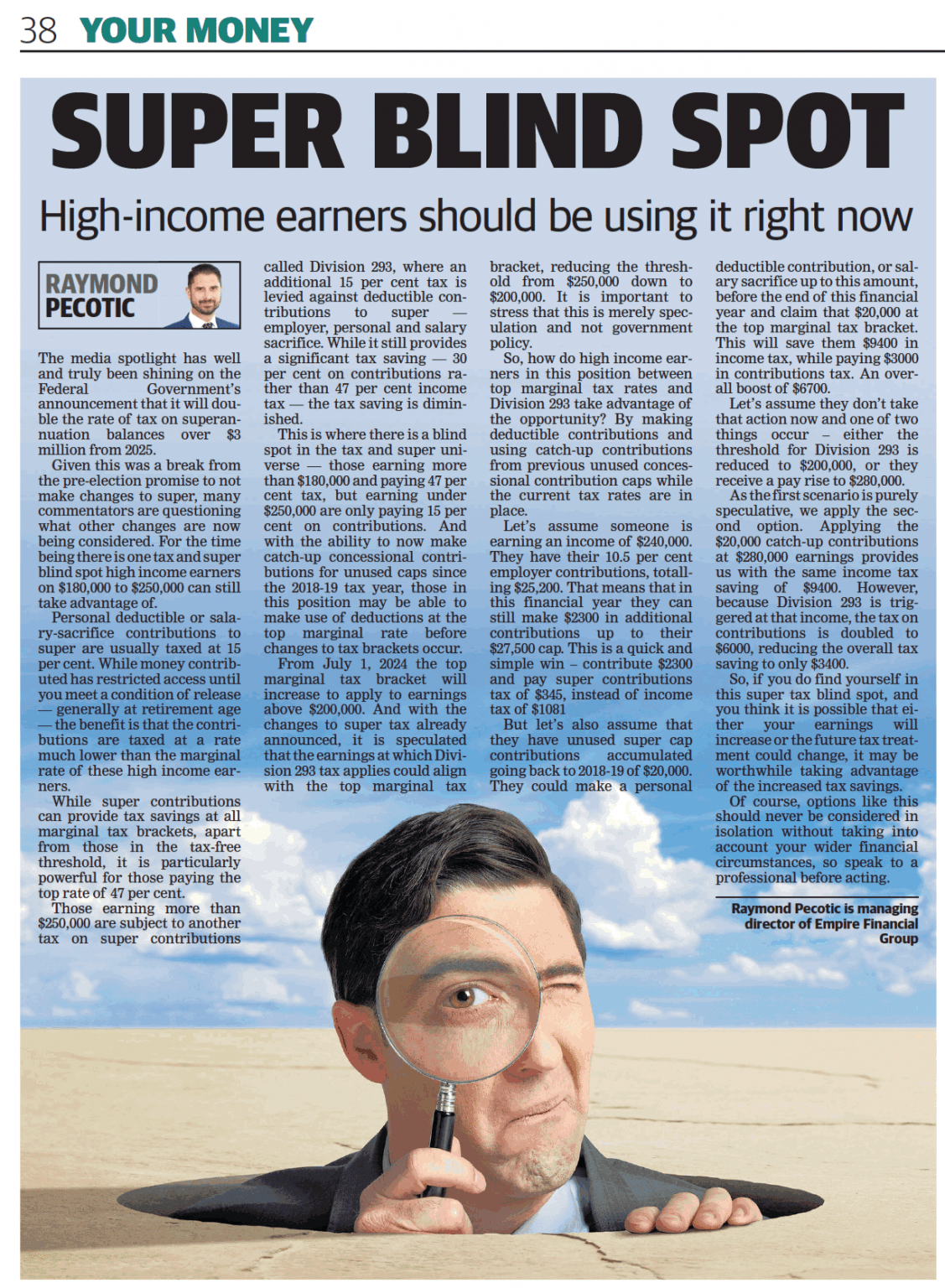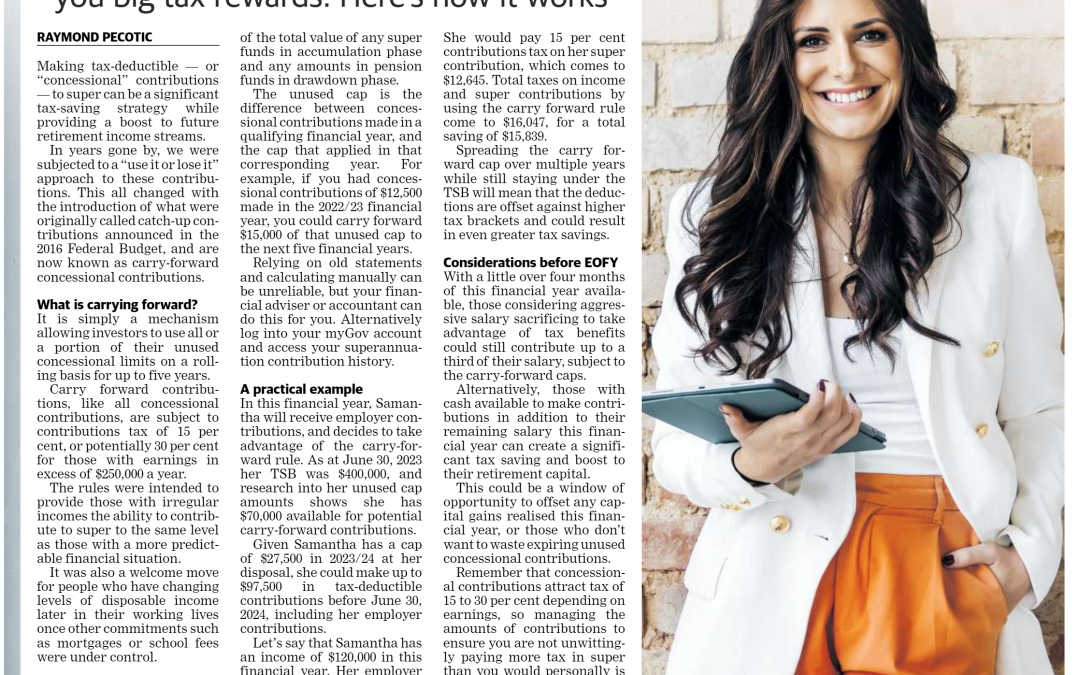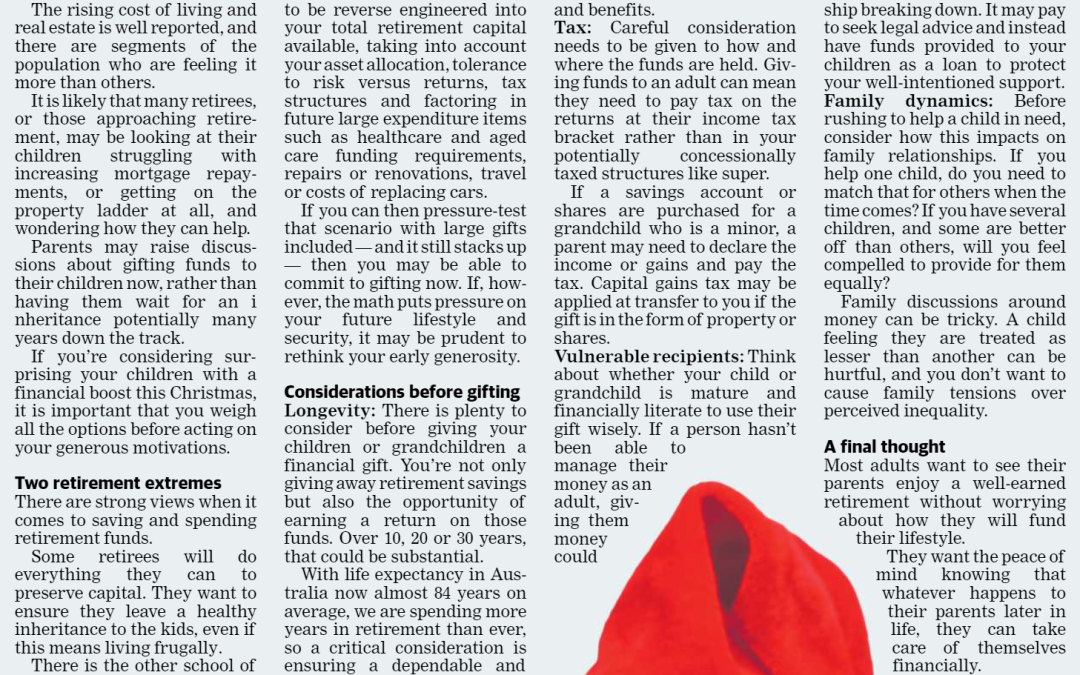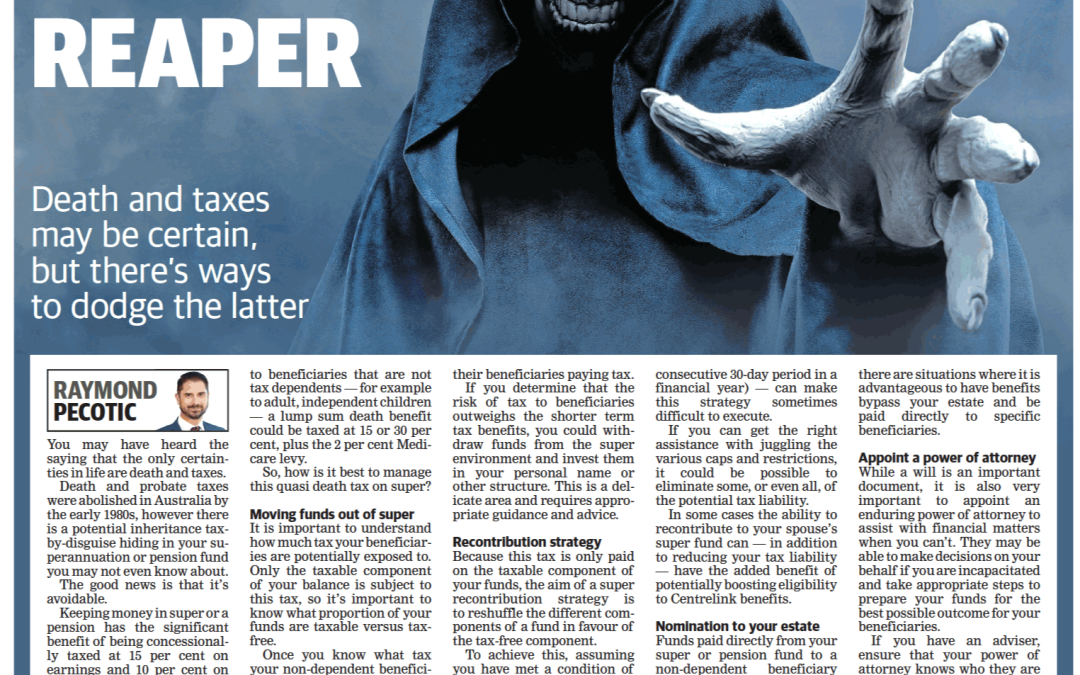This article was written by Raymond Pecotic, Managing Director of Empire Financial Group, and first appeared in The West Australian, Your Money, on 13 March 2022.
The media spotlight has well and truly been shining on the Federal Government’s announcement that it will double the rate of tax on superannuation balances over $3 million from 2025.
Given this was a break from the pre-election promise to not make changes to super, many commentators are questioning what other changes are now being considered. For the time being there is one tax and super blind spot high income earners on $180,000 to $250,000 can still take advantage of.
Personal deductible or salary-sacrifice contributions to super are usually taxed at 15 per cent. While money contributed has restricted access until you meet a condition of release — generally at retirement age — the benefit is that the contributions are taxed at a rate much lower than the marginal rate of these high income earners.
While super contributions can provide tax savings at all marginal tax brackets, apart from those in the tax-free threshold, it is particularly powerful for those paying the top rate of 47 per cent.
Those earning more than $250,000 are subject to another tax on super contributions called Division 293, where an additional 15 per cent tax is levied against deductible contributions to super — employer, personal and salary sacrifice. While it still provides a significant tax saving — 30 per cent on contributions rather than 47 per cent income tax — the tax saving is diminished.
This is where there is a blind spot in the tax and super universe — those earning more than $180,000 and paying 47 per cent tax, but earning under $250,000 are only paying 15 per cent on contributions. And with the ability to now make catch-up concessional contributions for unused caps since the 2018-19 tax year, those in this position may be able to make use of deductions at the top marginal rate before changes to tax brackets occur.
From July 1, 2024 the top marginal tax bracket will increase to apply to earnings above $200,000. And with the changes to super tax already announced, it is speculated that the earnings at which Division 293 tax applies could align with the top marginal tax bracket, reducing the threshold from $250,000 down to $200,000. It is important to stress that this is merely speculation and not government policy.
So, how do high income earners in this position between top marginal tax rates and Division 293 take advantage of the opportunity? By making deductible contributions and using catch-up contributions from previous unused concessional contribution caps while the current tax rates are in place.
Let’s assume someone is earning an income of $240,000. They have their 10.5 per cent employer contributions, totalling $25,200. That means that in this financial year they can still make $2300 in additional contributions up to their $27,500 cap. This is a quick and simple win – contribute $2300 and pay super contributions tax of $345, instead of income tax of $1081
But let’s also assume that they have unused super cap contributions accumulated going back to 2018-19 of $20,000. They could make a personal deductible contribution, or salary sacrifice up to this amount, before the end of this financial year and claim that $20,000 at the top marginal tax bracket. This will save them $9400 in income tax, while paying $3000 in contributions tax. An overall boost of $6700.
Let’s assume they don’t take that action now and one of two things occur – either the threshold for Division 293 is reduced to $200,000, or they receive a pay rise to $280,000.
As the first scenario is purely speculative, we apply the second option. Applying the $20,000 catch-up contributions at $280,000 earnings provides us with the same income tax saving of $9400. However, because Division 293 is triggered at that income, the tax on contributions is doubled to $6000, reducing the overall tax saving to only $3400.
So, if you do find yourself in this super tax blind spot, and you think it is possible that either your earnings will increase or the future tax treatment could change, it may be worthwhile taking advantage of the increased tax savings.
Of course, options like this should never be considered in isolation without taking into account your wider financial circumstances, so speak to a professional before acting.



